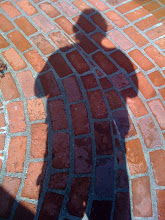



Its the stuff science fiction movies are made from. Bleary eyed from an early morning flight, I walk outside into the hazy fog that only the Central Coast of California knows at 10 AM. The verdant oak tress are barren, the garden paths are paved in a yellowy powder, and every railing, tree trunk, Adirondack chair, is covered with thousands of one inch caterpillars with little red round heads. Avoiding sitting or stepping or squashing one with your hand is unavoidable. Too bad because these creatures ooze green when exploded by pressure.
But this is real, this is the oak moth.
Every decade or so, maybe in some places, more frequently (obviously my property), the California oak moth, Phryganidia californica populations explode and defoliate large areas of coast live oak. In 2007, parts of Monterey, Carmel and Del Rey Oaks supported an outbreak. This continued in 2008 and extended in patches inland to Carmel Valley Village. This is a natural part of the life cycle of the coast live oaks. But somewhat worrisome since it was only three years since the last population explosion.
My first reaction was that I was loosing my beautiful ancient oaks. It was tough for me when a 200 + foot specimen died of natural causes and I had to have it taken down. This would be devastating. I called my Carmel Valley nature guru Jon Augustitus who assured me this was part of nature and that the tress would all come back stronger. He also explained that in times of drought this was nature’s way of making the giant oaks less dependent on water. But now the caterpillars, and the yellow powder…what’s up?
Moths, like butterflies, are part of the order Lepidoptera and thus have a similar life cycle. Females lay whitish eggs in clusters on twigs and leaves; the eggs turn reddish or brownish as hatching approaches. I must admit I never saw this coming. The eggs hatch into tiny black caterpillars or larvae. The mature larvae are 20–30mm long and are olive green with black and yellow longitudinal lines along the back and sides and have a reddish head. These are the monsters that defoliated my oaks. When they are ready, the larvae enter the pupa stage. The pupae are white or yellow with black markings and are found hanging from bark, leaves, and branches. When the pupa is mature, an adult oak moth will emerge. And this is what I have to look forward to; as many moths as there are caterpillars!
Ok so this explains the bare trees and the creepy little crawlers that by the way fall from the trees into my hair, on my clothes; one even took a dive into my small batch bourbon. What about the yellow powder?
It’s the frass. When oak moth caterpillars begin feeding they drop frass. Their frass is small and golden brown in color. What’s frass? Simple, frass is the indigestible part of my oak leaves. Frass is caterpillar poop. I am just amazed at the amount!
In situations like this my knee jerk reactions is to call someone; some kind of exterminator. This time though I am going on what I am being told. It’s part of nature’s order. I am able to bask in her beauty so why not follow her rules.
I will report back and let’s not forget the moths that are due in thirty days or so.




